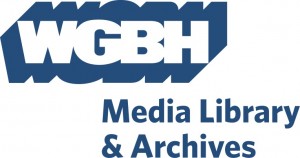From October 1, 2015, to December 1, 2015, WGBH, on behalf of the AAPB NDSR, will be accepting applications for organizations to serve as hosts for the 2016-2017 NDSR residency. Host organizations for the AAPB NDSR must be responsible for creating, curating or distributing publicly funded television and radio content, and public media stations are especially encouraged to apply.
UPDATE: Host applications are currently CLOSED.
(Note: One of the goals of the AAPB NDSR program is to address the digital preservation needs at public media organizations. As a result, the program is not specifically targeted towards archival or cultural memory institutions, but some cultural heritage institutions may qualify to host residents. Please contact us if you are unsure about whether your organization might be eligible.)
Seven organizations will be selected to host residents; the announcement of the final selection will be made on January 18, 2016. Organizations do not need to be partners of WGBH or participating members in the American Archive of Public Broadcasting to apply.
PLEASE NOTE: An updated set of project forms, reflecting changes in the required host commitments, were posted on 9/28. The updated forms are all labeled UPDATED 9/28/2015 along the top. Please make sure to use the updated forms when completing your host applications. Host applications submitted using outdated forms will be sent back to the host for re-submission.
AAPB NDSR Host Applications and Instructional Documents:
AAPB NDSR Host Application — application to host an AAPB NDSR resident
AAPB NDSR Host Institution Requirements — criteria for hosting an AAPB NDSR resident
AAPB NDSR Host Application Instructions — how to submit an application
For more information about how residents will be paid and what commitments are required from hosts to participate in the residency, please visit the Frequently Asked Questions page on this site.
Sample Project Proposals:
Sample NDSR Project Proposal (WGBH) — an example of the successful project that WGBH submitted to NDSR Boston to receive a resident.
Sample NDSR Project Proposal (WNYC) — an example of the successful project that WNYC submitted to NDSR NY to receive a resident.
Sample Full Application — an example of a full application submitted to NDSR NY. Although this application does not include some required elements of the AAPB NDSR’s proposal, such as the Host Mentor Checklist, this document should help hosts get an idea of what a completed application would look like
To view other sample successful project proposals, please visit NDSR DC’s Host Proposals page or NDSR NY’s Information for Hosts page.
In hosting a resident, participating organizations will gain:
- The full-time contribution of a trained professional archivist resident for ten months, whose salary is funded by AAPB NDSR
- A direct link into a professional network of organizations with a vested interest in public broadcasting and preservation, including public media stations and organizations, archives holding public media content, and regional and national archival organizations
- Dedicated support from a member of the AAPB NDSR Advisory Board, who will serve as a virtual mentor to the resident on the preservation aspects of their project
- A connection to an established local or regional archivist, identified by the AAPB NDSR, who will provide archival advice on an as-needed basis to the resident and the host institution
- Access to opportunities for continuing education and professional development offered through the NDSR program
- Ongoing promotion for their participation in the program and historical content through the AAPB NDSR
- A final project deliverable designed for the long-term benefit of their organization
Projects for residents must focus on one or several aspects of audiovisual digital preservation and stewardship, such as digitization, digital file management, or long-term digital preservation planning.
An incomplete list of the kind of specific projects that might fall under this umbrella includes digitization workflow planning and development, digitization management, born-digital asset workflow design and management, digital storage design and management, digital ingest (adding digital audio and video files to a repository), file migration (changing the format of a file for the purposes of preservation), metadata mapping and management, digital policies and standards development, and the creation of digital preservation education and training — just to name a few. The National Digital Stewardship Alliance (NDSA) Levels of Digital Preservation chart may be a good place to start in considering what kinds of projects would be helpful for your organization to improve the preservation of your digital assets. (The NDSA Digital Preservation Glossary may also be a useful resource.)
The project must require significant intellectual engagement, include transferable skills for the resident, and have a measurable outcome or deliverable that can be documented in a resident’s final portfolio. In other words, the resident shouldn’t be spending the entire residency cataloging or performing inventory, although tasks such as these may make up a portion of a larger project.
AAPB NDSR program staff are happy to answer questions and work with stations to brainstorm and provide feedback on project ideas. Please reach out to Rebecca Fraimow (rebecca_fraimow@wgbh.org) or Casey Davis (casey_davis@wgbh.org) with thoughts or queries.


